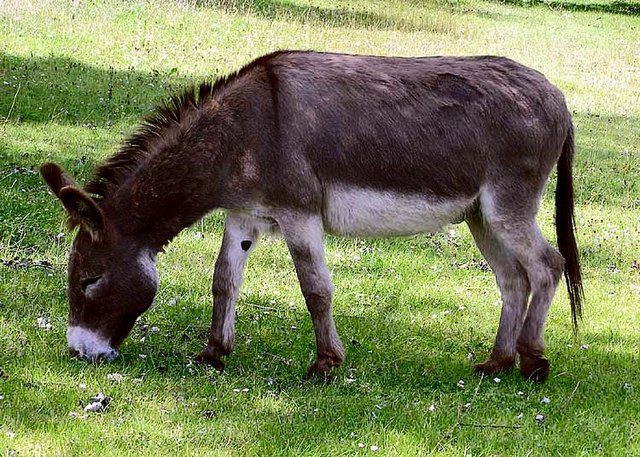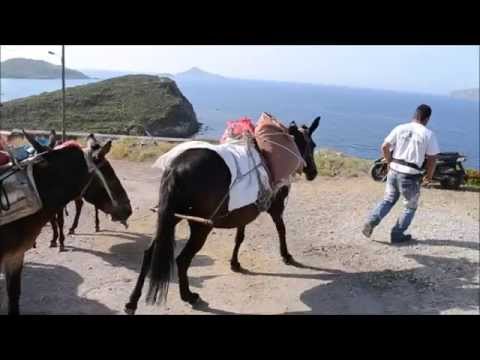
Does a donkey differ from a donkey: features, advantages of the species, origin and geography
How diverse is the Russian language, and how many synonyms can you come up with for one word. Many people can express the same concept in completely different words, while leaving the meaning unchanged. However, it is not always possible to use interchangeable words, it is important to know when this use is appropriate. Sometimes an unpleasant situation (casus) can happen due to an incorrect interpretation. Many people think that a donkey and a donkey are two absolutely identical concepts. Is this really the case, this article will let you know.
Contents
Where did the words “donkey” and “donkey” come from?
No one can say exactly how the word “donkey” appeared. Some scientists say that the beginning was the word in Latin asinus. It is not possible to translate it exactly, but the approximate meaning is “an animal that looks like a horse, makes a strong roar and stands firmly on its hooves.”
The history of the appearance of the word “donkey” is rooted in the Turkic languages. It means the animal that many used to call the donkey. Biologists say that donkeys originated from a Somali ancestor and already from those very past times they began to be used by man as an assistant in housekeeping.
From a historical point of view, the first descendants appeared in the northern part of Africa, the rest were slightly distributed in Asia and in different regions of the Middle East.
Origin and features
A small, gray, stubborn and harmful animal – this image of a donkey has developed among many people. However, this unpleasant stereotype is seriously different from reality. Donkeys are animals having a lot of advantages, most of which passed to them from wild ancestors.
Advantages of donkeys on the farm:
- unpretentiousness;
- omnivorous;
- no need for forging;
- exceptional endurance;
- high load capacity.
In many respects, these animals are much more profitable than horses, however, they are not so popular all over the world. This is due to the fact that they are very good developed self-preservation instinct, and a person for a long time could not reduce it. A horse, as you know, can be so driven that it will fall dead. With a donkey, such things will not work, he will not budge until he rests and will patiently wait for the owner to reduce his burden if the load is too large for him.
The donkey was among the first wild animals that man managed to “conquer” and use for his own purposes. Modern donkeys are descended from those in Nubia and northeast Africa. It is said that about 5000 years ago, the inhabitants of Egypt were already conducting their household with the help of a donkey.
Today, donkeys are bred by many farmers and can be found in almost every corner of the world. It is of great importance in the formation of the economy, as well as human culture.
Donkeys bring benefits not only in the household, but also as a transport, transporting a person and his things, products and so on. Foreign countries of Central America and Mexico, as well as Russian ones – the mountainous Caucasus and various places in Central Asia – readily use this.
Donkey subspecies
Although the donkey is a domesticated animal, there is one related subspecies that does not want to serve a person in any way. it Asian donkeys or kulans. They have been repeatedly tried to tame, but no matter what efforts are made to this, to date, no one has yet managed to do this.
Breeding in Somalia and parts of Africa Somali donkeys, which are very shy and try to keep five or even twenty animals at once. Their main food is dry grass and shrubs growing in the desert.
For the locals, these wild animals are a great source of meat and hide, which are mainly for sale, so at the moment this species has practically become obsolete. There are also very few representatives of the wild donkey species left in Asia, they are also on the verge of extinction.
Syrian donkey, most recently living in Syria and various parts of the Middle East, according to preliminary data, is already regarded as an extinct species. Few people know about its positive qualities, which are very important in breeding, their presence would allow many farmers to engage in the quantitative increase of this particular species.
There was only one problem left – to find out how much this species could be domesticated and whether it was possible in principle. He was very hardy animal and felt great in the desert, as he could live for a long time without water.
When wild donkeys had offspring, they grouped into large herds to protect the cubs, and after a while dispersed into small ones. Thus, these animals existed for quite a long time.
Currently, due to human activities, wild donkeys are becoming less and less, and most of them are listed in the Red Book. They actively fight for the existence of this species and try to increase the number of offspring and its survival.
Donkey or donkey
Many people wonder what is the difference between a donkey and a donkey. The answer is that there is no difference between them, they are the same species. The donkey is anatomically identical to the wild African donkey, the only difference is in what place in the world it lives: hence the different names. Therefore, you can call this animal both a donkey and a donkey, there are no differences in the biological sense.
Now it became clear that the donkey and the donkey are the same animal. Like any creature on earth, the donkey has features that are worthy of attention.
- The donkey is the closest relative of the horse.
- According to statistics, a fall from a donkey is more traumatic than from a horse.
- Donkeys do not walk alone, they move in herds. Sometimes in such “groups” there can be almost 1000 individuals, and they usually bring offspring once a year.
- This animal used to be sacred to the Indo-Europeans.
- When a donkey (male) and a horse (female) are crossed, a mullah is obtained.
- Coloring and growth depends on the breed, the tallest representatives can reach 155 centimeters.
- Donkeys live for about 30 years, but there have been cases of longevity up to 60.
- The donkey is the symbol of the US Democratic Party.
- Despite the fact that they are not particularly picky in food, they require exceptionally clean water.
- It is believed that the secret of Cleopatra’s youth and beauty is donkey milk baths.
- The stubbornness of donkeys is an instinct for self-preservation that a person could not bring out, no matter how hard he tried.


Watch this video on YouTube







